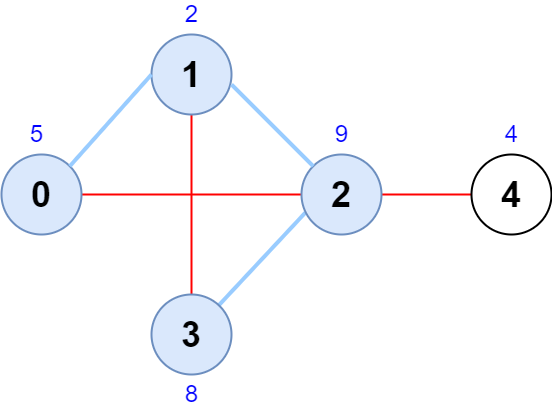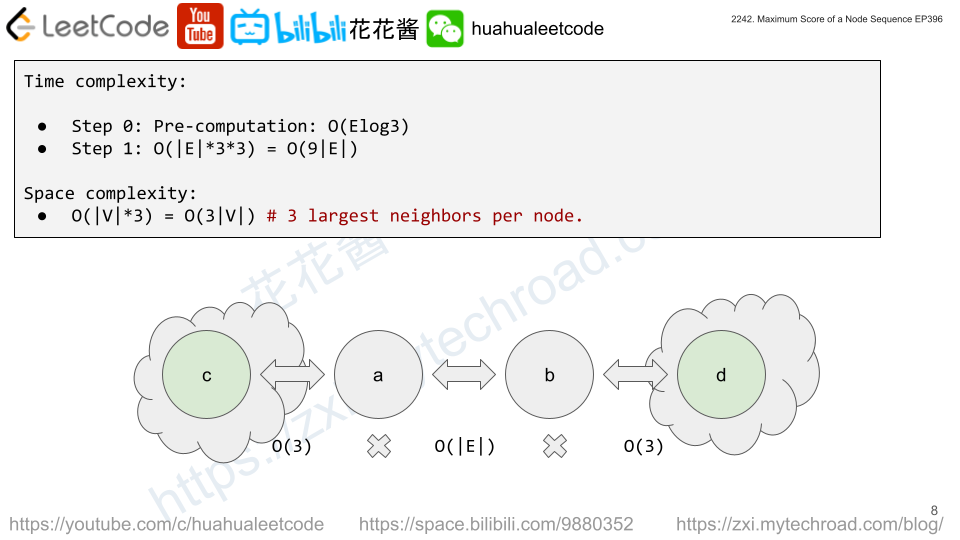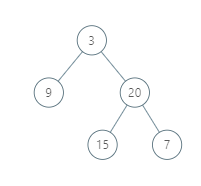There is an undirected graph with n nodes, numbered from 0 to n - 1.
You are given a 0-indexed integer array scores of length n where scores[i] denotes the score of node i. You are also given a 2D integer array edges where edges[i] = [ai, bi] denotes that there exists an undirected edge connecting nodes ai and bi.
A node sequence is valid if it meets the following conditions:
- There is an edge connecting every pair of adjacent nodes in the sequence.
- No node appears more than once in the sequence.
The score of a node sequence is defined as the sum of the scores of the nodes in the sequence.
Return the maximum score of a valid node sequence with a length of 4. If no such sequence exists, return -1.
Example 1:

Input: scores = [5,2,9,8,4], edges = [[0,1],[1,2],[2,3],[0,2],[1,3],[2,4]] Output: 24 Explanation: The figure above shows the graph and the chosen node sequence [0,1,2,3]. The score of the node sequence is 5 + 2 + 9 + 8 = 24. It can be shown that no other node sequence has a score of more than 24. Note that the sequences [3,1,2,0] and [1,0,2,3] are also valid and have a score of 24. The sequence [0,3,2,4] is not valid since no edge connects nodes 0 and 3.
Example 2:

Input: scores = [9,20,6,4,11,12], edges = [[0,3],[5,3],[2,4],[1,3]] Output: -1 Explanation: The figure above shows the graph. There are no valid node sequences of length 4, so we return -1.
Constraints:
n == scores.length4 <= n <= 5 * 1041 <= scores[i] <= 1080 <= edges.length <= 5 * 104edges[i].length == 20 <= ai, bi <= n - 1ai != bi- There are no duplicate edges.
Solution: Greedy / Top3 neighbors





Since |E| is already 5*104, we can’t enumerate all possible sequences. We must do in O(|E|) or O(|E|log|E|).
Enumerate all the edges, we have a pair of node a, b. To get the optimal answer, we just need to find the largest neighbor of a and b, which we call c, d respectively. Just need to make sure a, b, c, d are unique. i.e. c != d, c != b and d != a. Since the a’s largest neighbor can be either b or d. We can’t just store the largest neighbor, but top 3 instead for each node to avoid duplications.
Time complexity: O(|E|*9)
Space complexity: O(|V|*3)
C++
|
1 2 3 4 5 6 7 8 9 10 11 12 13 14 15 16 17 18 19 20 21 22 23 |
// Author: Huahua class Solution { public: int maximumScore(vector<int>& scores, vector<vector<int>>& edges) { const int n = scores.size(); vector<set<pair<int, int>>> top3(n); for (const auto& e : edges) { top3[e[0]].emplace(scores[e[1]], e[1]); top3[e[1]].emplace(scores[e[0]], e[0]); if (top3[e[0]].size() > 3) top3[e[0]].erase(begin(top3[e[0]])); if (top3[e[1]].size() > 3) top3[e[1]].erase(begin(top3[e[1]])); } int ans = -1; for (const auto& e : edges) { const int a = e[0], b = e[1], sa = scores[a], sb = scores[b]; for (const auto& [sc, c] : top3[a]) for (const auto& [sd, d] : top3[b]) if (sa + sb + sc + sd > ans && c != b && c != d && d != a) ans = sa + sb + sc + sd; } return ans; } }; |


